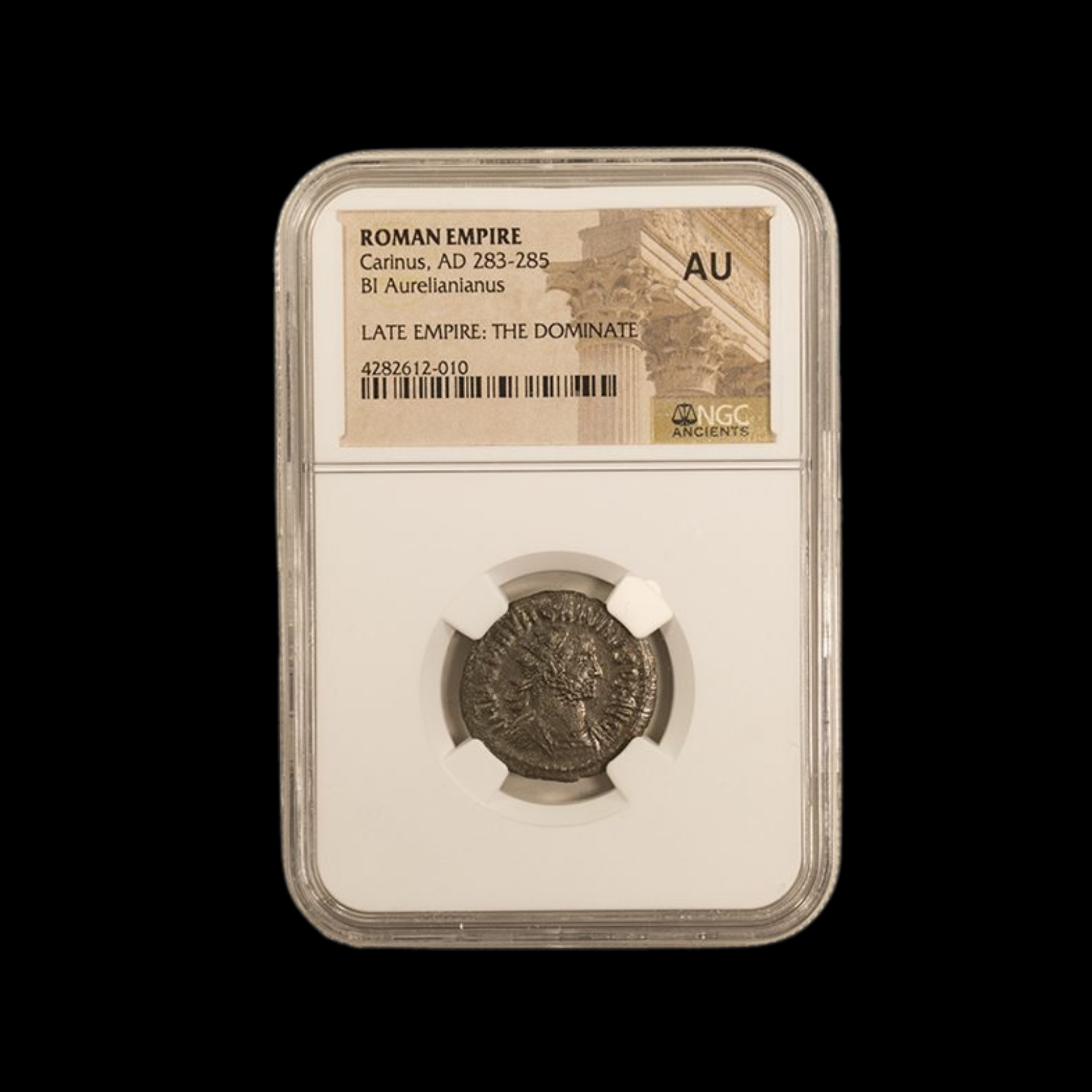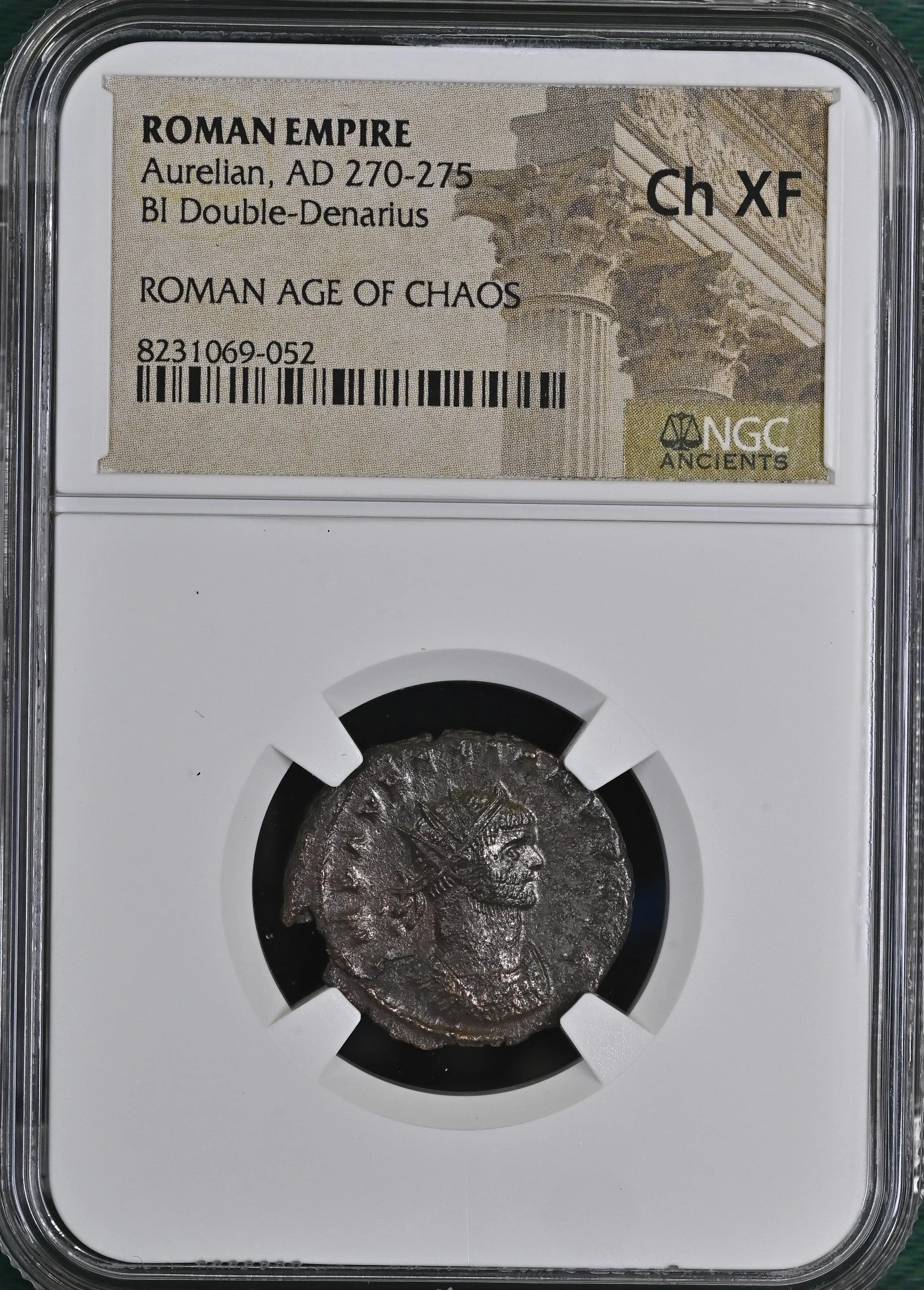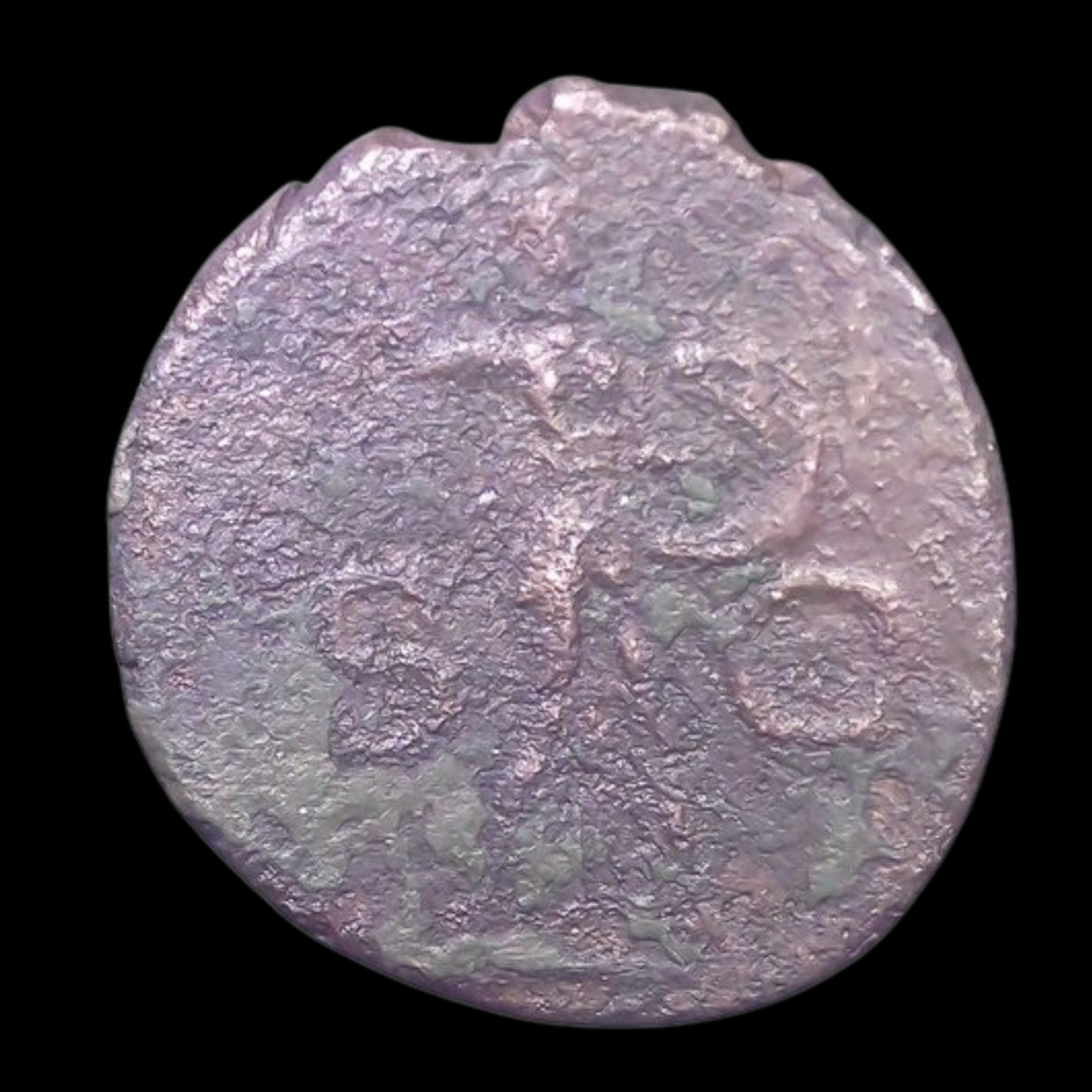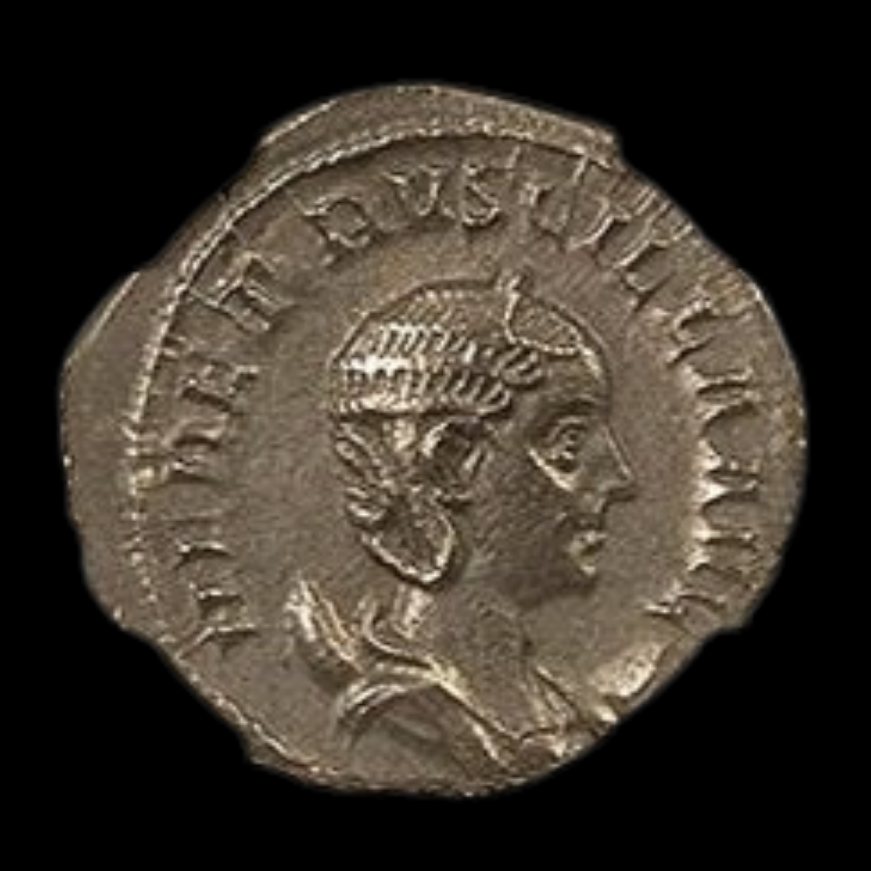 Image 1 of 7
Image 1 of 7

 Image 2 of 7
Image 2 of 7

 Image 3 of 7
Image 3 of 7

 Image 4 of 7
Image 4 of 7

 Image 5 of 7
Image 5 of 7

 Image 6 of 7
Image 6 of 7

 Image 7 of 7
Image 7 of 7








Roman Billon Antoninianus of Carinus (about 1,740-1,742 years ago)
The coins shown are representative examples of the grade and type, but not the actual specimens for sale. For details on NGC’s grading standards and definitions, please refer to our NGC Grading page.
This silver-washed bronze coin is an Antoninianus featuring Emperor Carinus, who briefly ruled as co-emperor of the Roman Empire alongside his brother Numerian. Issued during his short reign between 283 and 285 CE, this coin represents the continuing political instability during the late Crisis of the Third Century.
Coin Description:
Front side: Portrait of Emperor Carinus facing right, wearing a radiate crown (distinguishing feature of the Antoninianus denomination), with his name and titles in Latin around the edge.
Back side: Likely features military themes, personifications of virtues, or religious imagery common to the period.
Technical Details:
Billon composition (low silver content mixed with copper)
Denomination: Antoninianus (technically a double-denarius, though with minimal silver content by this period)
Weight: Approximately 3-4 grams
Diameter: Approximately 22-23 mm
NGC Certified for authentication and preservation
Minted between 283-285 CE
Condition as specified by NGC certification
Historical Significance: Carinus's brief reign illustrates the precarious nature of imperial power during the late 3rd century. Son of Emperor Carus, he was appointed Caesar (junior emperor) in 282 CE and then elevated to co-emperor in 283 CE, ruling the western provinces while his brother Numerian accompanied their father eastward. Following the deaths of both his father and brother, Carinus faced a challenge from Diocletian, who had been proclaimed emperor by eastern troops. Although initially successful against Diocletian's forces, Carinus was reportedly murdered by his own officers in 285 CE. After his death, he suffered damnatio memoriae (condemnation of memory), with his name and that of his wife erased from official inscriptions. This coin survives as tangible evidence of his brief rule before this attempted erasure from Roman history.
The coins shown are representative examples of the grade and type, but not the actual specimens for sale. For details on NGC’s grading standards and definitions, please refer to our NGC Grading page.
This silver-washed bronze coin is an Antoninianus featuring Emperor Carinus, who briefly ruled as co-emperor of the Roman Empire alongside his brother Numerian. Issued during his short reign between 283 and 285 CE, this coin represents the continuing political instability during the late Crisis of the Third Century.
Coin Description:
Front side: Portrait of Emperor Carinus facing right, wearing a radiate crown (distinguishing feature of the Antoninianus denomination), with his name and titles in Latin around the edge.
Back side: Likely features military themes, personifications of virtues, or religious imagery common to the period.
Technical Details:
Billon composition (low silver content mixed with copper)
Denomination: Antoninianus (technically a double-denarius, though with minimal silver content by this period)
Weight: Approximately 3-4 grams
Diameter: Approximately 22-23 mm
NGC Certified for authentication and preservation
Minted between 283-285 CE
Condition as specified by NGC certification
Historical Significance: Carinus's brief reign illustrates the precarious nature of imperial power during the late 3rd century. Son of Emperor Carus, he was appointed Caesar (junior emperor) in 282 CE and then elevated to co-emperor in 283 CE, ruling the western provinces while his brother Numerian accompanied their father eastward. Following the deaths of both his father and brother, Carinus faced a challenge from Diocletian, who had been proclaimed emperor by eastern troops. Although initially successful against Diocletian's forces, Carinus was reportedly murdered by his own officers in 285 CE. After his death, he suffered damnatio memoriae (condemnation of memory), with his name and that of his wife erased from official inscriptions. This coin survives as tangible evidence of his brief rule before this attempted erasure from Roman history.























